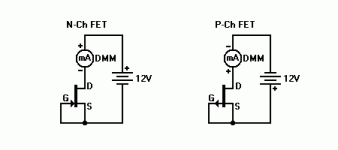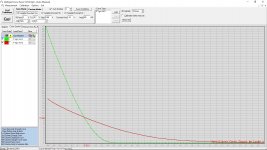The both devices are BL grade, but the IDSS is unknown.
It is relatively simple and straightforward to measure Idss and gain. If you are going to DIY build an amplifier, you should be able to measure your JFETs. If you need help, there are plenty of people here who will help.
today on youtube (XrayTonyB) talked @7min about on DIYaudio matching transistors. There is a circuit board to build for matching?
I just bought 150 Vishay IRFP240PBF for $154 at IRFP240PBF in Tube by Vishay | Mosfets | Future Electronics
on Findchips website i found LSK170B at LSK170B-TO-92 Stock and Price by Distributor
Im ready to buy 100 of each and learn how to match and buy or make what ever I need.
If any one can guide us to the thread here at DIY for matching.the DYI search engines is sometimes like using Goggle translate Chinese to english to find things.
I just bought 150 Vishay IRFP240PBF for $154 at IRFP240PBF in Tube by Vishay | Mosfets | Future Electronics
on Findchips website i found LSK170B at LSK170B-TO-92 Stock and Price by Distributor
Im ready to buy 100 of each and learn how to match and buy or make what ever I need.
If any one can guide us to the thread here at DIY for matching.the DYI search engines is sometimes like using Goggle translate Chinese to english to find things.
If I'm right, measurement above, suggested by my friend, reveals only one parameter, IDSS.
I had to pay for my lessons, I have bought some JFETs, measured IDSS, found to be O.K., then turned out fakes:
(JFET represented by green line is genuine one, red one is clearly fake.)
I had to pay for my lessons, I have bought some JFETs, measured IDSS, found to be O.K., then turned out fakes:
(JFET represented by green line is genuine one, red one is clearly fake.)
Attachments
I'd like to thank everyone for their helpful replies. Especially on how to measure IDSS. The Jfets I purchased from Spencer in Singapore haven't arrived yet. Measuring them should be straightforward. My question, however, is more along the lines of how much variance between the N and P channel is okay? Also, spec variance for BL grade range from 6-12...what it optimal and what happens the further you from optimal. Does it increase noise? Does sound quality deteriorate?
A reasonable idss match is better than 10%, some like 5 % , or even tigher, but it changes with temperature, even holding them in your fingers changes the idss,
. You need to let them stabilize in your idss test for a couple of minutes, with no breeze, and don’t touch them , even changes in house temperature causes some drift, so measure them at the same time of day
The idss value you need depends on the circuit design.
. You need to let them stabilize in your idss test for a couple of minutes, with no breeze, and don’t touch them , even changes in house temperature causes some drift, so measure them at the same time of day
The idss value you need depends on the circuit design.
I'd like to thank everyone for their helpful replies. Especially on how to measure IDSS. The Jfets I purchased from Spencer in Singapore haven't arrived yet. Measuring them should be straightforward. My question, however, is more along the lines of how much variance between the N and P channel is okay? Also, spec variance for BL grade range from 6-12...what it optimal and what happens the further you from optimal. Does it increase noise? Does sound quality deteriorate?
Refer here for the store's advice on JFET matching and the relevance of tolerance:
JFET matching information – diyAudio Store
You can fact check that detail through the various threads here and over at First Watt / PassDIY.The JFET matching tolerance required for any of Nelson's projects is 1mA
EDIT:
Fun fact / side-note - JFET guru, Erno Borbely, sold JFETs matched to 0.5 mA Idss according to the archived price list that I found:
https://web.archive.org/web/20100215160207/http://www.borbelyaudio.com/pics/Compprice.pdf
So, the noted comment from the store would not appear to be unreasonable.
Last edited:
Yes, he is a verified/reliable source.Anybody know if the eBay user punkydawgs (in Sacramento) is selling the real deal? Has several listings for 2SJ74 and 2SK170 right now.
Anybody know if the eBay user punkydawgs (in Sacramento) is selling the real deal? Has several listings for 2SJ74 and 2SK170 right now.
Mr. Pass has written about punkydawgs in post #20:
https://www.diyaudio.com/forums/pass-labs/317563-replacement-toshiba-2sk170-2sj74-2.html#post5311970
At least one First Watt design has been re-engineered to use other, current production, non Toshiba semiconductors. If you don't want to spend AUD 80 for Toshibas, either perform some re-engineering yourself, or buy the amp in the diyA Store that's already been re-engineered. Or I suppose you could simply accept the fact that some obsolete semiconductors sell for the same prices as obsolete vacuum tubes. Que sera, sera.
- Home
- Amplifiers
- Pass Labs
- Replacement For Toshiba 2SK170/2SJ74

